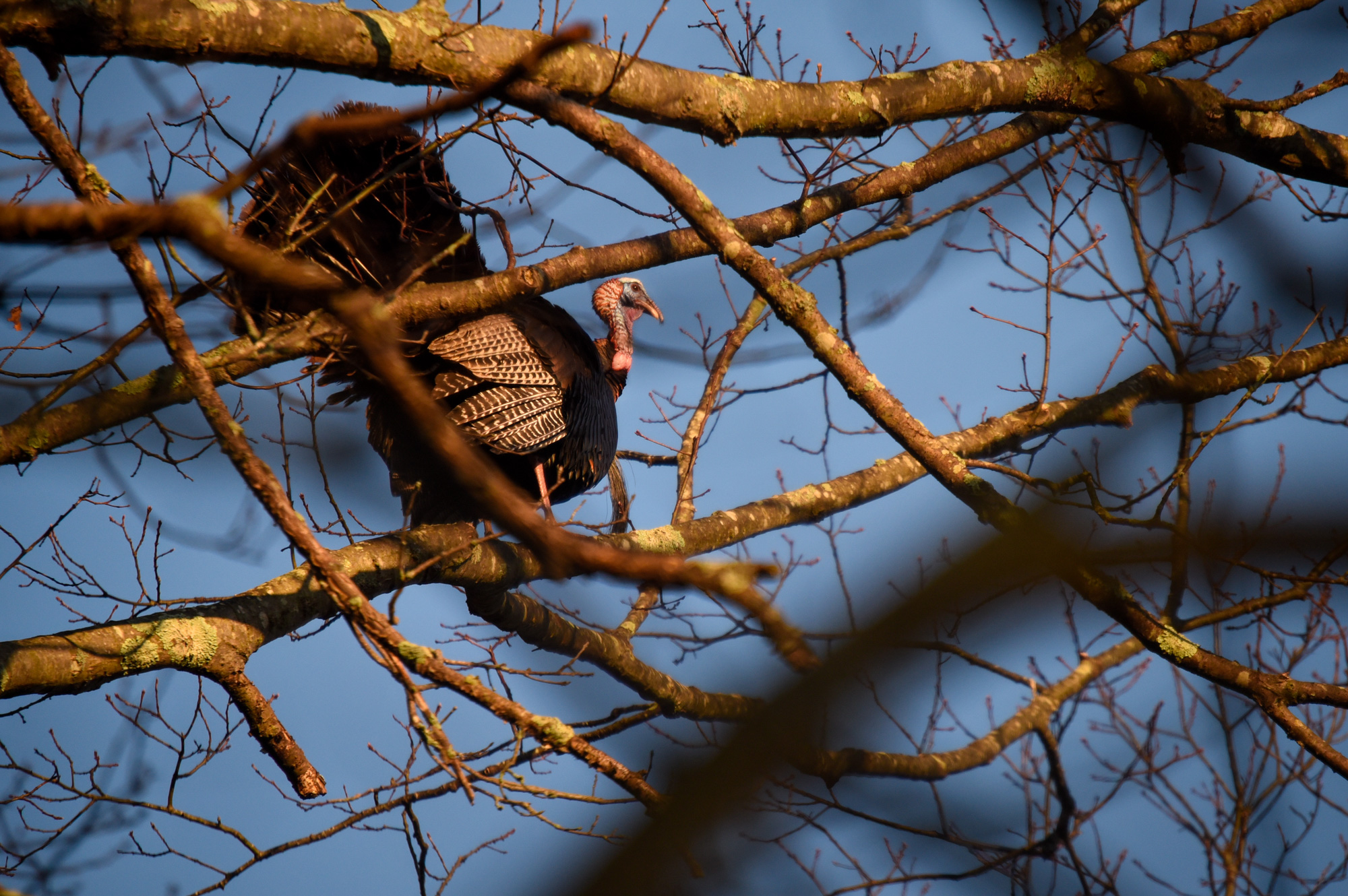Locating Roosts
Knowledge of a roost location can be beneficial to turkey hunters. A bird in a tree is far more desirable than listening and hoping.
Consider the factors below to determine likely roost sites:
Proximity to water
The old hunter’s adage suggesting, “Turkeys love to roost where they can hear their droppings hit water,” rings true here.
Heavy, mature timber
Dense cover is particularly appealing during bitter cold or strong wind.
Open areas
Trees offering birds opportunities to use open areas to fly up in the evening and leave the roost in the morning. You’ll seldom find a roost surrounded by dense undergrowth for an appreciable distance.
Evergreens
Conifers are appealing to turkeys during times of the year when deciduous trees are bare.
Shelter sites
This can be deep hallows, the lee side of ridges away from prevailing winds or other protected areas
Aside from identifying likely preferences, try to locate a precise roosting tree.
Here are some tips on locating actual roost sites:
Look for sign
Any good woodsman, and that is a signal hallmark of skilled turkey hunters, is adept at finding and reading sign. Feathers and accumulated droppings tell glorious tales.
Use your ears
Anytime you are in the woods at daylight and dusk, be alert for the sounds of turkeys flying up or down, tree yelping or birds accidentally being flushed by your movements. Roost preferences change according to the season, but this can be an exciting sidelight to a day in a deer stand.
Use your eyes
Witnessing turkeys on the ground at a point during the day — morning or evening — when they obviously are near a roost.
